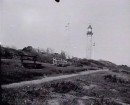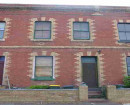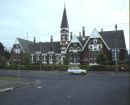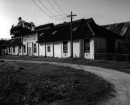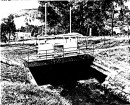KOO-MAN-GOO-NONG
85 McGregor Road PAKENHAM, Cardinia Shire
-
Add to tour
You must log in to do that.
-
Share
-
Shortlist place
You must log in to do that.
- Download report
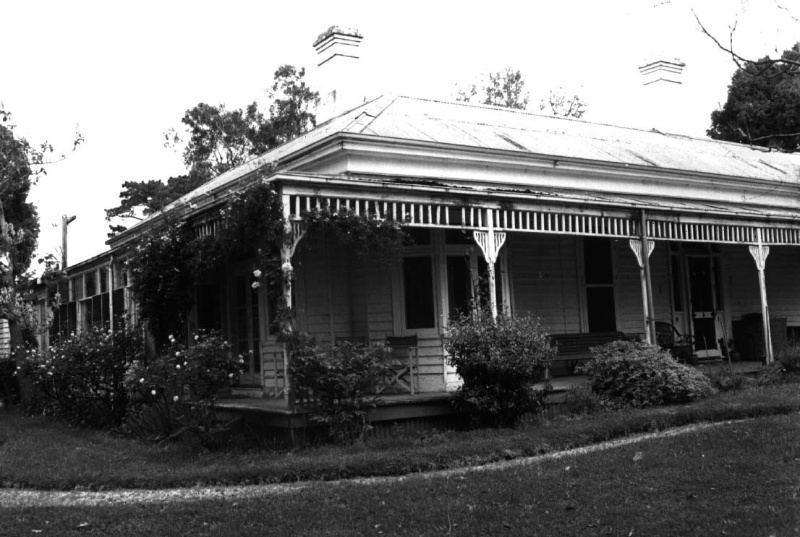

Statement of Significance
Koo-Man-Goo-Nong, with its c1908 house and 1920s garden, as well as some pre-1900 buildings and plantings, is of significance to the Cardinia Shire because of its associations with the district's earliest farming history. The site has historical significance as part of the 1840s Toomah pastoral run and, from 1853, of Dr. James Bathe's Toomah lease. Other significant early owners included the Hentys and Daniel Bourke.
This place is also significant for its associations with Arthur Greenwood, wool auctioneer for the Australian Estates Company, for whom the existing weatherboard homestead was built around 1908. From 1920, the property had significant associations with the locally prominent Ronald family, who own it still.
A major part of the regionally important garden which surrounds the house, was planted by Mrs Gwladis Ronald, wife of William Bruce Ronald, grazier, owner of Koo-Man-Goo-Nong.
Mrs Ronald's garden book, dated April 1923, survives with details of her plantings which enhances the importance of the garden.
The property also has significance for its collection of farm buildings which include stables, blacksmith's shop, gas shed, dairy, shearing shed and cowshed.
Regional Significance
-
-
KOO-MAN-GOO-NONG - Physical Description 1
Cottage/Hut
This is a gabled timber hut with a skillion verandah along part of the west side and a gabled wing added to the south-west corner. It has 75mm compound moulded architraves to double hung four-pane sash windows; machine sawn weatherboard cladding, with joints indicating stages, the right-hand (south) section being the older. The corrugated iron brand is a 6-pointed star with `B' within and `Regd. Mark' under. Internal lining is T&G pine; paving is machine and hand-made bricks. Chimney bricks are handmade (75x100x220mm).
Cowshed
This is gabled timber cowshed, with one open side and yards. The rafters and battens are machine sawn, the wide pine cladding on the south is recent (2nd hand timber?), and the weatherboards are hardwood on the west side; the shallow roof pitch indicates construction for corrugated iron, rather than shingles and the timber cow-bail frames are tenoned.
Stables, rooms
This is a high, gabled form weatherboarded building with a skillion added to the south end.
The wall is leaning, and wall sections indicate staged construction. The loft has softwood butt-jointed boarding (part); the external weatherboard pattern shows the store room was added on the north; the weatherboards are machine sawn hardwood. The men's room (south skillion room) is lined with fibrous cement sheet with panel jointing, it has T&G softwood flooring and six-pane double hung sashes (poor condition) on the south. The north men's room has a window facing east, single pane glazing and 1920s architraves to this and the door.
Woolshed
This was once a double gabled building with the ridge running north-south. A skillion has been added to the west side, rafters are machine sawn as square-section posts (140mm) but with most columns being bush poles (220mm diam). Corrugated iron brand on north wall has a crest with `Guinea' under, another is `Lysaght' galvanised tinned (blue) also (red) `Orb' brand and the skillion is `Redcliffe' brand. The floor is earth under the typical slatting for the early section and concrete floor for the added skillion.
The stable wall is exposed inside the woolshed, showing that it was originally free standing and has been joined to the woolshed with a skillion-roofed section. Joints in the west elevation of the stable shows 2/3 of the wall was constructed on the south end and 1/3 at the north.
Dairy
The most recent structure of the outbuildings inspected, the dairy is sawn softwood weatherboard clad, has a high gabled profile and a skillion verandah on the east side. It has 70mm compound moulded architraves, ledge & braced doors, seaweed in the cavities. Finials were probably removed from the gable apices, the eaves are ventilated (as typical), the floor is concrete (verandah is brick-edged) and the internal lining is fibrous cement sheet.
House
This is a large house with dominantly Edwardian characteristics (conservative) but with an earlier core. There is a window bay on the north-east corner, and skillions added on the west side (has Victorian era architraves) and south-east corner (part bullnose boards, some earlier square edge but with plain bullnose architraves). The verandah has been enclosed on the east side (1950s). There is diamond-pane leadlight glazing of the door top and side lights, with 1930s character elements inside (stepped glazed panels, lambs tongue architraves).
The internal chimney placement is unusual.
Garden
The garden is an informally laid out setting appropriate to the house, with many mature exotic and some native trees. It distinguishes the property as a local landmark, situated on the top of a prominent hill, entered along an extensive drive lined with sugar gums (Eucalyptus cladocalyx).
Much of the garden dates from the nineteenth century and early twentieth. The garden is particularly well developed on the protected aspects, the northern and eastern sides. A windbreak of Monterey cypress runs along the western edge of the property. The property contains a vegetable garden and orchard. There is a recently refurbished and relocated summer house in the garden as well as a granite memorial to Mary Gwladis Ronald (`whose ashes are scattered over this garden..which she loved 1885 - 25th August 1948'). Most plantings date from c1923 but the large pines are from c1894.
The garden contains a collection of mature exotic and native trees. There is an ornamental garden at the front of the house, with shrubs, trees and open lawn area, and other mature trees at the rear and sides of the house. In January 1989, a number of mature, rare and unusual trees from 1923 were identified in the garden. These include: Brachychiton acerifolius,
Brachychiton populneus, Cedrus atlantica, Cedrus deodara, Ceratonia siliqua, Cupressus macrocarpa `Aurea Saligna'(could be C.m.`Conybearii', Ulmus parvifolia, Agathis robusta, Erythrina sp.,Feijoa sellowiana, Grevillea robusta, Lagerstroemia indica, Araucaria heterophylla, Paulownia ? tomentosa, Stenocarpus cuninghamii, Ginkgo biloba, Fraxinus excelsior `Aurea', Arbutus unedo, Laburnum sp., Buddleja globosa (rare), Jacaranda mimosifolia, weeping elm and several varieties of oak, including a weeping oak1.
Shrubs include: Iochroma cyaneum, Ficus pumila `Minima', Duranta erecta, and Tibouchina urvilleana `Grandiflora'.
Many plants are listed in a garden book of Mrs Gwladis Ronald, dated April 19232. The most unusual of these is a huon pine, a Tasmanian rainforest species, and the collection of plants included natives and exotic trees. Mrs Ronald was a very keen gardener, having grown up in England, and is said to have been influenced by Gertrude Jekyll, the famous English garden designer.
Mature trees in the garden which remain today are: Ulmus parvifolia (two), Jacaranda mimosifolia (two), Erythrina sp. (many ), Paulownia sp. (many), Acca sellowiana, Acmena ? smithii, Syringa vulgaris, grafted weeping elm, Araucaria heterophylla, A. bidwillii, Brachychiton sp., Ceratonia siliqua, Mahonia sp., Pittosporum sp., a jade plant (1930s), Ginkgo biloba, Laurus nobilis (1920s), Cupressus torulosa (two), Cupressus macrocarpa `Conybearii' (two), Cedrus atlantica, C. deodara, Cupressus torulosa, Araucaria bidwillii, Schinus molle var. areira, Grevillea robusta, and Pinus sp.(various). Gravel sinuous paths separate open lawn areas and there are a number of garden ornaments such as concrete birdbaths, which came from Dreamthorpe, Mount Macedon (Gwladis Ronald was a daughter of Lady Hodges, well known for her garden at Mt. Macedon. Gwladis, in turn, has been described by Heather Ronald in her book Wool Past the Winning Post as `the suffragette' and must have been an interesting woman).
The gravel paths date from the 1920s and none has been altered. The planting consists of a pair of the same species of tree at the end of a path. Mrs Ronald favoured the planting of blue flowering trees and shrubs, hence the Paulownia, Jacaranda, Duranta, etc. The Pinus strobus (white pine) are thought to date from c1894.
Before settlement, the original vegetation of this area was narrow leafed peppermint.
KOO-MAN-GOO-NONG - Physical Conditions
Given the staged construction of the complex, the elements appear to be externally generally well-preserved.
KOO-MAN-GOO-NONG - Historical Australian Themes
Historical Themes
3.1 Squatters/pastoralists and grazing10.2 Pastoralists' homes, gardens
10.7 Farmhouses/farm complexes & outbuildings, gardens
11.0 Evidence of: Life style, housing and landscape choice of notable figures residing in the district
KOO-MAN-GOO-NONG - Physical Description 2
Associations - Bourke, Daniel; Greenwood, Arthur; Ronald, William Bruce; Ronald, Peter Bruce
Heritage Study and Grading
Cardinia - Cardinia Shire Heritage Study 1996
Author: Graeme Butler & Associates
Year: 1996
Grading: Local
-
-
-
-
-
ST JAMES CHURCH OF ENGLAND (FORMER)
 Cardinia Shire
Cardinia Shire -
Former St James Church of England
 National Trust
National Trust -
HOUSE
 Cardinia Shire
Cardinia Shire
-
'CARINYA' LADSONS STORE
 Victorian Heritage Register H0568
Victorian Heritage Register H0568 -
1 Alexander Street
 Yarra City
Yarra City -
1 Botherambo Street
 Yarra City
Yarra City
-
-






